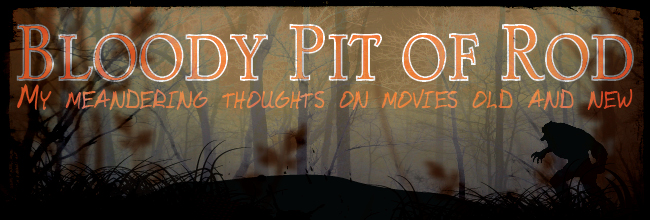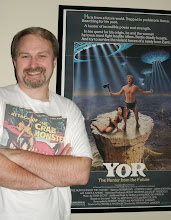 I've been busy over the last few days doing the standard Christmas things but my return to the house the other night was when I finally finished watching Ishiro Honda's follow up film to GOJIRA. I have been slow to catch up with the great monster filmmaker's lesser known projects and this film falls into that category for odd reasons. According to Wikipedia Japan, the movie was removed from general circulation due to the original screenplay describing the inhabitants of the remote village similar to the Ainu people as being deformed from generations of inbreeding. Knowing this going in I was on the lookout for a nasty attitude in the dialog or even in the way characters act when dealing with the natives but I found no such thing. The version I watched is a poor copy of the full length Japanese film as far as I know and the fan-made subtitles were clear and typo free but perhaps the unknown translator smoothed over the racially charged moments in the story. There were certainly no such references made in the film's dialogue as I saw it, but I would be happy to learn if the translation I have is not quite accurate.
I've been busy over the last few days doing the standard Christmas things but my return to the house the other night was when I finally finished watching Ishiro Honda's follow up film to GOJIRA. I have been slow to catch up with the great monster filmmaker's lesser known projects and this film falls into that category for odd reasons. According to Wikipedia Japan, the movie was removed from general circulation due to the original screenplay describing the inhabitants of the remote village similar to the Ainu people as being deformed from generations of inbreeding. Knowing this going in I was on the lookout for a nasty attitude in the dialog or even in the way characters act when dealing with the natives but I found no such thing. The version I watched is a poor copy of the full length Japanese film as far as I know and the fan-made subtitles were clear and typo free but perhaps the unknown translator smoothed over the racially charged moments in the story. There were certainly no such references made in the film's dialogue as I saw it, but I would be happy to learn if the translation I have is not quite accurate. Soon I'll have to watch the American version of the film HALF HUMAN to see what was left after the US scissors went to work. If this Wikipedia entry is true there is probably not much similarity between the two movies--
" The 1958 nationwide U.S. release of this film took sequences of Jujin Yuki Otoko and added extensive new scenes starring John Carradine and featuring Morris Ankrum and two lesser-known American actors, and the entire soundtrack was replaced with American stock music cues, sound-effects, and voice-over narration by Carradine replacing all dialogue in the Japanese scenes.
Toho's costume for the snowman's son was even imported by the new film's makers and used in a scene where the creature has supposedly just been autopsied by Ankrum and is seen lying on an operating table. Including the extensive American footage, this version runs only 63 minutes in total. "
That means that there is a 33 minute run time difference between the two movies and the American version has scenes shot just for the English language film. Holy crap! This should be interesting, especially as I think the Japanese version was a little too long.








2 comments:
Hullo there, and thanks for a nice review! I thought I'dd add some info regarding the Toho ban on the movie. It's not so much that the main characters would use racial slurs or such against or about the "natives" that got people riled. Rather, it is the way that the village people are portrayed - as inbred, deformed, primitive, backwards and cruel. Most people believe that it was the indigenous Ainu minority that protested the movie, but back in 1955 there really was no Ainu civil rights movement, which really didn't gather steam before the eighties. In 1955, for better or worse, the Ainu had been more or less assimilated with the Japanese, and the Ainu issue wasn't really on the cultural map.
However, one minority that was on the cultural map was the Burakumin issue. The Burakumin were traditionally the lowest caste of Japanese society, and were Pariahs because of their work in "unclean" professions, such as dealing with dead humans or animals - undertakers, butchers, leather-workers, etc, but also for example sanitary workers, garbage collectors, etc. There was long a law against the Burakumin marrying outside their caste, and they would often be assigned to live in remote villages, suburbs or ghettos. At one point a government decree was made, declaring the Burakumin "one seventh the worth of a real Japanese". The Burakumin were shunned, discriminated against and labelled as savage, backwards, inbred and filthy", very much like the villagers in the movie.
After WWII, however, the Buraku Liberation League was founded, and started working against discrimination and together with the socialists and communists of Japan started pressing the government to enact laws to protect and liberate the Burakumin - and it is most likely that it was the BLL that pressured Toho to shelve the film.
Wow! Thank you for the historical background on this hard to find film. I see some parallels to the way African-American characters were portrayed in Hollywood films for decades even if the two examples don't line up perfectly. I still wish the film were more easily available even if it would need to come with caveats about the underlying racism in the story.
Post a Comment